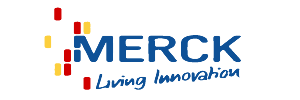|
|
| Line 96: |
Line 96: |
| | <h3 id="July">July Week 1: Plasmid Amplification</h3><br> | | <h3 id="July">July Week 1: Plasmid Amplification</h3><br> |
| | <p>We chose pRSFDuet-1, pACYCDuet-1 and pCDFDuet-1 as expression vectors and pBluescript II KS(+) as the connector. These plasmids were amplified for further construction.<p> | | <p>We chose pRSFDuet-1, pACYCDuet-1 and pCDFDuet-1 as expression vectors and pBluescript II KS(+) as the connector. These plasmids were amplified for further construction.<p> |
| - | <img src="https://static.igem.org/mediawiki/2014/0/07/SJTU14-notebook-week1.jpg"width=25% height=25%> | + | <img src="https://static.igem.org/mediawiki/2014/0/07/SJTU14-notebook-week1.jpg"width=50% height=50%> |
| | + | |
| | <h3 id ="JulyWeek2" >July Week 2: Plan Making</h3><br> | | <h3 id ="JulyWeek2" >July Week 2: Plan Making</h3><br> |
| | <p>We intended to construct the gene of our fusion protein, ssDsbA-mRFP-HL-Lgt-FL-TAL-His Tag, using overlap PCR, enzyme digestion and ligation. After careful consideration, we decided to connect ssDsbA-mRFP-HL-Lgt as one part of this fusion protein and FL-TAL-His Tag for another, so that they could be connected together.<p> | | <p>We intended to construct the gene of our fusion protein, ssDsbA-mRFP-HL-Lgt-FL-TAL-His Tag, using overlap PCR, enzyme digestion and ligation. After careful consideration, we decided to connect ssDsbA-mRFP-HL-Lgt as one part of this fusion protein and FL-TAL-His Tag for another, so that they could be connected together.<p> |
| | + | |
| | <h3 id ="JulyWeek3" >July Week 3: Construction of Part 1</h3><br> | | <h3 id ="JulyWeek3" >July Week 3: Construction of Part 1</h3><br> |
| | <p> We constructed the first part, ssDsbA-mRFP-HL-Lgt with overlap PCR and ligated it into the pBluescript II KS(+). Then we obtained more plasmids through transformation, colony picking and plasmid extraction. After that, we verified them with digestion identification and sequencing. Sequencing results showed accurate construction.<p> | | <p> We constructed the first part, ssDsbA-mRFP-HL-Lgt with overlap PCR and ligated it into the pBluescript II KS(+). Then we obtained more plasmids through transformation, colony picking and plasmid extraction. After that, we verified them with digestion identification and sequencing. Sequencing results showed accurate construction.<p> |
| - | <img src="https://static.igem.org/mediawiki/2014/8/82/SJTU14-July_week3.jpg"width=25% height=25%> | + | <img src="https://static.igem.org/mediawiki/2014/8/82/SJTU14-July_week3.jpg"width=50% height=50%> |
| | + | |
| | <h3 id ="JulyWeek4" >July Week 4: TAL Connection</h3><br> | | <h3 id ="JulyWeek4" >July Week 4: TAL Connection</h3><br> |
| | <p> In order to construct the second part, we had to obtain the TAL we needed using bioparts from 2012 Freiburg iGEM team. But unfortunately, we didn't get any positive result.<p> | | <p> In order to construct the second part, we had to obtain the TAL we needed using bioparts from 2012 Freiburg iGEM team. But unfortunately, we didn't get any positive result.<p> |
| | + | |
| | <h3 id="August">August Week 1-2: PCR Optimization</h3><br> | | <h3 id="August">August Week 1-2: PCR Optimization</h3><br> |
| | <p>Because of the negative results, we decided to adjust some PCR parameters, including the annealing temperature, template concentration and cycle number. Test the conditions for the PCR. | | <p>Because of the negative results, we decided to adjust some PCR parameters, including the annealing temperature, template concentration and cycle number. Test the conditions for the PCR. |
| | Connected TAL, transform, colony picking plasmid extraction and digestion identification. Find with our electrophoresis band. Expression vectors and connector plasmid are confirmed by sequencing.<p> | | Connected TAL, transform, colony picking plasmid extraction and digestion identification. Find with our electrophoresis band. Expression vectors and connector plasmid are confirmed by sequencing.<p> |
| | + | |
| | <h3 id ="AugustWeek3" >August Week3:</h3><br> | | <h3 id ="AugustWeek3" >August Week3:</h3><br> |
| | <p>There are some problems about Freiburg’s parts. We can’t connect TAL in the right order. | | <p>There are some problems about Freiburg’s parts. We can’t connect TAL in the right order. |
| | So we design some new primers for PCR that can produce the right sequence.<p> | | So we design some new primers for PCR that can produce the right sequence.<p> |
| | + | |
| | <h3 id ="AugustWeek4" >August Week4</h3><br> | | <h3 id ="AugustWeek4" >August Week4</h3><br> |
| | <p>Design a few new ports for the fusion protein. | | <p>Design a few new ports for the fusion protein. |
| | Sequencing results showed accurate construction. Observe the FP using LSCM to confirm the fusion protein can locate on the membrane.<p> | | Sequencing results showed accurate construction. Observe the FP using LSCM to confirm the fusion protein can locate on the membrane.<p> |
| | + | |
| | <h3 id="September" >September Week1</h3><br> | | <h3 id="September" >September Week1</h3><br> |
| | <p>Try co-transformation: Prsf pacyc pBluescript . | | <p>Try co-transformation: Prsf pacyc pBluescript . |
| | Find the conditions of protein expression. | | Find the conditions of protein expression. |
| - | Find the way to construct the TAL.<p> | + | Find the way to construct the TAL.<p> |
| | + | |
| | <h3 id ="SeptemberWeek2" >September Week2</h3><br> | | <h3 id ="SeptemberWeek2" >September Week2</h3><br> |
| | <p>Find the enzymes for the application. | | <p>Find the enzymes for the application. |
| | Find the way to detect the substrate in these pathways. | | Find the way to detect the substrate in these pathways. |
| | Connector plasmid modification.<p> | | Connector plasmid modification.<p> |
| | + | |
| | <h3 id ="SeptemberWeek3" >September Week3</h3><br> | | <h3 id ="SeptemberWeek3" >September Week3</h3><br> |
| | <p>TAL gene synthesis. Construct the part with our new ports.<p> | | <p>TAL gene synthesis. Construct the part with our new ports.<p> |
| | + | |
| | <h3 id ="SeptemberWeek4" >September Week4</h3><br> | | <h3 id ="SeptemberWeek4" >September Week4</h3><br> |
| | <p> TAL gene synthesis.<p> | | <p> TAL gene synthesis.<p> |


 "
"







